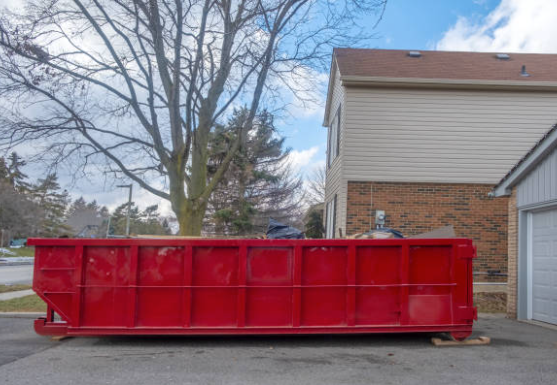
Whether a 30 yard dumpster will fit in your driveway depends primarily on your driveway’s dimensions and layout. A standard 30 yard dumpster typically measures 22 feet long, 8 feet wide, and 6 feet high, requiring a minimum driveway width of 10 feet and length of 25 feet to accommodate safe delivery and placement.
Understanding 30 Yard Dumpster Dimensions
The physical dimensions of a 30 yard roll-off container are crucial for determining proper placement in residential settings. These industrial-sized waste containers are designed to handle large volumes of debris while maintaining a footprint that can work in many residential locations. Here’s a detailed breakdown of standard measurements:
| Specification | Measurement |
|---|---|
| Length | 22 feet |
| Width | 8 feet |
| Height | 6 feet |
| Required Clearance Width | 10 feet |
| Required Clearance Length | 25 feet |
| Weight Capacity | 6-7 tons |
Driveway Requirements for 30 Yard Dumpster Placement
Surface Conditions and Materials
The driveway surface must be capable of supporting the substantial weight of both the dumpster and its contents. Concrete driveways are ideal, while asphalt driveways may require additional protection through the use of plywood or specialized dumpster pads. The surface should be level and free from significant cracks or damage that could worsen under the container’s weight.
Clearance and Access Considerations
Beyond basic dimensions, several clearance factors must be considered:
| Clearance Type | Minimum Requirement |
|---|---|
| Overhead Clearance | 23 feet |
| Side Clearance | 2 feet on each side |
| Approach Space | 50 feet straight access |
| Slope Tolerance | Less than 15 degrees |
Impact on Surrounding Landscape
When placing a 30 yard container in a driveway, consideration must be given to surrounding landscaping elements. Trees, shrubs, and other vegetation should be trimmed back to prevent damage during delivery and pickup. Additionally, property features like retaining walls, mailboxes, and decorative elements should be evaluated for potential conflicts.
Loading Zone Requirements and Safety Considerations
Creating a Safe Working Environment
The area around a 30 yard dumpster requires careful planning to ensure safe and efficient use. A properly sized loading zone should extend at least 3 feet on all sides of the container, allowing for safe movement and debris disposal. This space should remain clear of vehicles, equipment, and other obstacles throughout the rental period.
Weight Distribution Management
Proper weight distribution is critical when loading a 30 yard container. The dumpster should be loaded evenly from front to back and side to side to prevent shifting during pickup. Heavy materials should be spread across the container’s floor rather than concentrated in one area to avoid exceeding local weight restrictions.
Alternative Solutions for Limited Space
Split Load Options
For properties where a 30 yard dumpster won’t fit, consider splitting the project into multiple smaller containers. While this may require additional planning, it can be a viable solution for properties with space constraints while still accomplishing large-scale waste removal goals.
Strategic Placement Alternatives
When driveway placement isn’t feasible, explore alternative locations such as:
- Side yard placement (with proper surface preparation)
- Street placement (with necessary permits)
- Staged loading areas with smaller containers
Duration and Scheduling Considerations
Rental Period Planning
The time a 30 yard dumpster occupies your driveway should be carefully planned. Most rental companies offer flexible rental periods, but extended presence can impact daily activities and property access. Consider factors like project timeline, weather conditions, and local regulations when determining rental duration.
Project Timeline Optimization
To maximize efficiency and minimize driveway occupation, develop a detailed loading schedule. This helps ensure the dumpster is used effectively and removed promptly once the project is complete, reducing impact on daily activities and property access.
Conclusion
While a 30 yard dumpster can fit in many residential driveways, successful placement requires careful consideration of multiple factors including driveway dimensions, surface integrity, and clearance requirements. Proper planning and preparation, including accurate measurement of available space and consideration of alternative solutions when necessary, will ensure a successful dumpster rental experience while maintaining property functionality and safety.
30 Yard Dumpster FAQs
How much weight can a 30 yard dumpster hold in my driveway?
A 30 yard dumpster typically has a weight capacity of 6-7 tons when placed on a residential driveway. However, local regulations and driveway structural integrity may require limiting the total weight to prevent damage to the surface.
What types of driveways are best suited for a 30 yard dumpster?
Concrete driveways that are level, at least 10 feet wide, and 25 feet long provide optimal conditions for a 30 yard dumpster. The driveway should be free of significant cracks, properly cured, and able to support weights of up to 14,000 pounds when fully loaded.
How long can I keep a 30 yard dumpster in my driveway?
Standard rental periods for 30 yard dumpsters typically range from 7-10 days, but can be extended based on project needs. Most rental companies offer flexible scheduling options, though extended periods may incur additional daily fees.
Can a 30 yard dumpster damage my driveway?
While proper placement and protection measures significantly reduce risk, driveway damage is possible without adequate preparation. Using plywood or dumpster pads, ensuring even weight distribution, and choosing appropriate placement locations can help prevent surface damage.
What clearance is needed for delivery and pickup of a 30 yard dumpster?
A minimum of 23 feet vertical clearance and 50 feet of straight approach space is required for safe delivery and pickup of a 30 yard dumpster. Side clearance of 2 feet on each side of the container is also necessary for proper placement and removal.